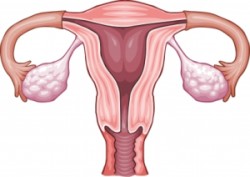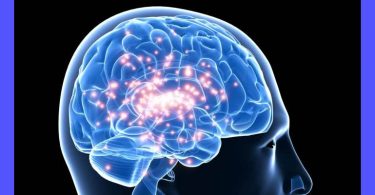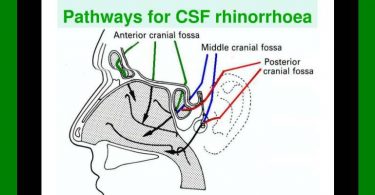During my journey as a Homeopath the last eleven years, whenever I have prescribed on Single Symptom Totality, I always felt thankful and grateful to my materia medica teachers. They always stressed one thing:
“Always remember that characteristic, unusual, peculiar symptoms are the most important of all in prescribing. Characteristic symptoms distinguish that individual remedy from other similar remedies. A symptom becomes characteristic in many ways. For instance, a common looking symptom becomes a characteristic feature of that remedy when it is studied in reference to its causation, location, sensation and modality. This is called Symptom Totality – A symptom in its total form…..”
Many times I have seen that just one such characteristic symptom, in its total form, describes the whole totality of that drug. It is possible to pin point that drug as a remedy of choice on that symptom’s presence in the patient. It can be called a Keynote Symptom of that remedy. Discovering one such keynote symptom in the patient, the remedy may just fit the remaining whole case. Single Symptom Totality itself becomes The Totality of Symptoms for that particular case, indicating that particular remedy. Let’s look at some cases examples to illustrate this:
“Doctor, after the head injury, I feel like I am a small child of 4-5 years, and I feel like doing mischief like them. I do not like being with or talking with elders and guys of my age; I feel shy. I do not feel like behaving like a grown up. I feel good being in the company of small children and playing with them. Along with this, my speech has become slurred and my right hand has become paralyzed. Absolutely no grip and power in my right hand. Cannot even hold pen, ball, or bread and cannot eat with right hand…….”
This seventeen year old boy had fallen from a fast moving train and remained unconscious for a month in the hospital. He regained consciousness, but with his right upper limb paralyzed, speech slurred and a change in his mental attitude and behavior. The feeling of being a child along with causative modality of head injury and concomitant symptom of paralysis was a symptom in its total form. As I already knew about the injury group of drugs like Arnica, Ledum pal, Calendula, Cicuta, Nat. sulph, Symphytum, Ruta etc., I wanted some reference for the feeling of being a child. I checked in Synthesis Repertory and in the Mind section I found something relevant.
Mind – Delusion – child: he is a child:
acts like a child; Cic, plut-n, symp
Cicuta and Symphytum are two well known injury drugs. Symphytum’s main sphere of action is on bones, facilitating the reunion of fractured bones. I selected Cicuta of course. Cicuta virosa 200, a single dose, brought about exteriorisation of the disease in the form of severe itchy eruptions all over the back, neck and scalp, fifteen days after the dose. The eruptions persisted for about two weeks, along with progressive improvement in the right hand paralysis, in speech and also in his mental attitude and behavior. The feeling that he is a child disappeared completely and he started behaving like an adult. The parents also commented that he no longer behaved like a child. After a month, Cicuta was repeated and physiotherapy was suggested. By the next month he resumed his duties.
Another example is a case of a huge Chocolate cyst ( Haemorrhagic cyst ) nearly 7 inches in diameter in the right ovary in a young, very lean, unmarried, over-sensitive girl, cured on the same basis of Single Symptom Totality.
Memory poor and forgetful especially for the well known streets and places. Dry mouth (Homeopathy Treatment for Dry Mouth) with marked thirstlessness. Tongue felt like dry cotton and would adhere or stick to the roof of the mouth. Aversion to water. Would drink only to moisten the mouth and then spit it out.
Dryness of the mucus membrane to the extent that tongue feels like dry cotton and sticks to the roof of the mouth along with concomitants like thirstlessness and aversion to water; drinks only to wet the mouth and then spits it out – Reference from Synthesis Repertory pointed out only and only to Nux.mosh. All the other characteristics of the case automatically fit.
Two doses of Nux.mosh 200 at the interval of fifteen days cleared the cyst completely and permanently. Rapid, gentle and permanent restoration of sick to health, as stated by the Great Dr.Samuel Hahnemann. Also, the girl who was under weight put on nearly 7 kgs. in next 2-3 months and looked more beautiful.
Moral of the story is – always try to complete any symptom in its total form, i.e. causation, location, sensation, modality and concomitant. You may discover keynotes pointing to the remedy like this. If not one single then, maximum three such keynotes are more than sufficient to select the remedy. Certainly by doing this, a physician’s high and only mission – to restore the sick back to health, becomes easier.
Editor’s note: Below is the whole case of chocolate cyst, enabling you to see the full symptom picture and how everything was covered :
A Case of Chocolate Cyst
Name: Ms. A. S.
Age: 25 yrs.
Date of first consultation: 12/15/2004
Chief Complaint:

USG Abdomen and Pelvis:
A huge right ovarian cyst approximately 15 cm in diameter was present and retained approximately 725 ml of blood. The left ovary showed multiple small cysts retaining blood. The cysts are known as hemorrhagic or “chocolate” cysts. The rest of the abdominal and pelvic organs were normal and there was no free fluid seen in the abdomino-pelvic cavity. There was no evidence of malignancy.
It had been 10 months since she was diagnosed and she had been treated unsuccessfully by another homeopath. She was advised to go for aspiration at Nanavati Hospital, Vile Parle to review the case again and to find the correct simillimum. She underwent aspiration as advised and continued with homeopathic treatment for two months but the cysts started filling up with blood and showed no sign of improvement. She came to me at this time and the case follows.
On Examination:
• No pain, no tenderness on touch and superficial palpation.
• A large lump was felt on deep palpation on the right side of the pelvis which was painless.
• Left side of pelvis felt normal on palpation.
Menstrual History:
30 days normal menstrual cycle with little pain and discomfort. Flow was intermittent. Spotting for first 3 days followed by flow of bright red blood with dark red clots. Gushing flow at times running down her heels. Fast staining blood difficult to wash off. Stringy and ropy clots. Stringy and ropy leucorrhoea in mid-cycle for 3-4 days suggesting ovulation. Irritable, angry, sad and depressed during period of ovulation and menses.
Mental State:
Hypersensitive to external impressions like noise. Disturbed and irritable from loud noise and if questioned repeatedly. Can’t tolerate injustice done to herself or anybody else. Fights for justice. Rebels against injustice and untruth. Feeling of being cheated, feeling of betrayal by those who don’t do their duties properly and are unfaithful to their work and responsibilities. Very duty conscious. Conscientious about trifles. Feels guilty if she has neglected her duties.
Anxious, worrying, caring and sympathetic to others. Would bear the pain herself to help others. Goes beyond her limit to help others. Worries about others’ health. Strong sense of idealism and duty consciousness. Faithful and loyal to her work and employers. Fastidious. Wants everything neat, clean and tidy, and wants things to be in their place. Irritable on seeing dirt and mess. Punctual. Anxious about time. Hurried to be on time. Anxious about meeting an engagement. Anticipating anxieties before exams. Stage fright. Nervous diarrhea before exams and stage performance. Anxiety about talking in public, but settles once started and performs well.
Memory is poor about places. Forgets well known streets. Cannot recognize known and familiar streets or places where she has been many times before. Gets confused and has to ask for directions. Memory is poor for certain names and terminologies. Mixes and confounds them.
Generalities:
Thirst – Absolute thirstlessness. Aversion to drinking water. Lips become dry, tongue adheres to roof of mouth but does not feel like drinking water. Drinks a sip to wet the mouth or holds water in mouth and then spits it out.
Appetite – Poor. Gas, constipation, and heaviness in the stomach and abdomen all the time. Does not feel like eating and does not feel hungry.
Craving – Spicy food and fruit juices.
Stool – Very sticky stool. Stools stick to the surface of commode, despite pouring water on it.
Menses – Stains remain on clothes in spite of hard washing.
Thermal state – Cannot bear cold drafts. Must wear thin covering on upper extremities. Bathes with warm water except in hot summer.
Family History:
Father suffered from 3rd stage tuberculosis in his youth. Sister also suffered from tuberculosis in her youth.
Miasmatic Approach:
Slow and progressive cystic pathology and collection of blood, together suggest activities of sycotic and tubercular miasms. Sticky stools, staining menses, gas, etc., as well as dullness of memory also suggest strong activity of the sycotic miasm. Family history of tuberculosis in father and sister suggests tubercular diathesis in background. Hypersensitive, irritable, emotional nature is a feature of psoric or tubercular miasms.
Characteristic Symptoms:
• Memory weak for well known and familiar streets
• Thirstlessness with dryness of mouth
• Tongue adheres to roof of mouth
• Staining of menses
• Sticky stools
Evaluation of Case:
I understood this patient as tough and strong looking on the outside but sensitive, emotional, and sympathetic on the inside. The pathology is similar in nature – a huge tough shell collecting ample amounts of liquid inside without showing any pain or discomfort for months at a time. This case needed a remedy which was tough on the outside but soft on the inside. A remedy with the combination of irritability, diligence, fighting for justice, punctual, neat and tidy as well as emotional, sympathetic, conscientious, worrying and caring for others. The remedy had to have poor memory for familiar streets, thirstlessness with dry mouth, and a love of spicy food.
Totality of Symptoms:
Memory weak for well known streets
Thirstlessness with dryness of mouth
Tongue adheres to roof of mouth
Menses difficult to wash off
Sticky stools
Craving for spicy foods
Applied Materia Medica:
When the symptoms mentioned above are repertorized, remedies like Nux moschata, Nux vomica, and Pulsatilla prominently appear. Pulsatilla can be ruled out because its changeable, weepy, timid, yielding nature is not seen in this case. Nux vomica is extremely bitter, poisonous, irritable and hypersensitive. This case is missing the extreme level of irritability of Nux vomica. Nux moschata seems to fit perfectly on the basis of its thirstlessness with dry mouth and weakness of memory for familiar and well known streets. These two symptoms are the keynote symptoms of Nux moschata and both symptoms are intensely present in this patient. Nux moschata was chosen as the prescription.
First Prescription:
Nux moschata 200 c
200 c potency was selected keeping the patient’s sycotic pathology in mind as well as the presence of two keynote characteristic symptoms in the case and remedy.
Follow Up:
Within 48 hours:
Patient came to clinic saying that she could palpate the cyst in her abdomen. Patient was examined by the doctor.
On Examination:
On superficial palpation, no mass was palpable.
On deep palpation, a small mass was palpable.
USG Abdomen:
Cyst showed remarkable decrease in size and volume.
After 15 days:
Dose was repeated for the persistent cyst and other symptoms of gas, etc.
In 2 months:
Appetite improved
Gas, flatulence reduced
Constipation better
Patient gained 6 kg weight
Thirst improved. Patient started liking water. Dryness of mouth disappeared.
USG Abdomen:
Both ovaries normal.
After 6 yrs:
No relapse. Patient is absolutely fine. She got married and is settled in her life.





I like this case report.both the usg reports also needed.
Thank you Dr.Kewat
keynotes always has value even within Repertorisation because many polychrest medicines come surface but we can differentiatie with keynote….although repertorisation is must to watch other possibility. Well case taken is half cured, dr Ami shah’s success is on well case taken in this case.Those articles match with our inner ideas which loved mostly.
Thank you very much!
every case is unique as much as every homeopath is, very well done and thank you for sharing
Thanks Dr. Waffa!
Hello Dr.S.R.Kewat, Dr.Vishnu Datt, Dr.wafaa Abdel Samad,
Thank you all of you for liking my article/case and encouraging me!
Good wishes to all of you,
Dr.Ami Shah
very very informative.Thank u DR for publishing such a case which ll b helpful to other homoeopaths.PL contribute more cases
Hello Dr.Sasikala,
Thank you very much for liking it! I will be happy to contribute more cases/articles on Homeopathy in future also. It is my pleasure.
Thank you Dr Ami Shah for the cases you have related. You have remarkable qualities to handle each case, particularly the chocolate cysts and the boy who got injured by falling from a train.
Thank you Dr.Jaswant
Thanks…
I learn a lot from you…
More cases please…
Many thanks! All my pleasure. 🙂
Dear Dr. Ami Shah. A complicated case unfolding indeed! An amazing gleaning of a few keynotes from a heap of confusing symptoms. Your miasmatic approach/analysis is very instructive. Here causation, sensation and modalities are absent. Only location and concomitants are present. The latter only in mental general and physical general symptoms. Wise selection of potency and interval are excellent. Thanks for sharing your experience. Salim
Thank you Dr. Salim for your comments.
When prescribing for this case or any case I work on, what I first do is take the whole case and then try to complete the symptoms which I feel more striking to me with respect to causation, location, sensation, modalities and concomitant. In this particular case of chocolate cyst the most striking feature I felt was the tongue sticking at the roof of mouth and feeling like cotton. When I asked ‘why’, the answer came out – ‘because it remains always very dry so I feel it like dry cotton which adheres or sticks to the roof of mouth.” So, I got the causation. This dryness speaks about the underlying miasmatic activity – The psora.
Location we have already – Mucous membrane of mouth, tongue
Sensation also we have already – The feeling like cotton and adhering to the roof of mouth
Modality – > by holding water into mouth or drinking water only in sips
Concomitant – Aversion to water producing absolute thirstlessness. This aversion and thirstlessness indicates the progress of psora to sycotic miasm.
Thus, completing this single symptom in this manner revealed a supreme keynote feature and narrowed the filter very very specific to the case by bringing only a few remedies on the surface which not only brought about the clarity to the finest level but also making final task of first prescription much much more easier and confident.
Then other characteristics of the case helped for differentiating from other drugs. Out of which the symptom of poor memory for well known streets and places helped in best.
Thank you very much – Dr. Ami
Dear Dr. Ami Shah. AoA. My comment was in respect of painless chocolate cyst as chief complaint whose external causation is not known . A painless cyst has no sensation and hence no modality. You are completing the single symptom totality with mouth characteristics. You mean that sometimes we have to seek the remedy in location/organ presenting peculiar symptom picture remote from locality of major complaint.your comments are learned like your article. Thanks once again. Salim
Yes, you have got my point correctly Dr.Salim. In grossly advanced pathological cases and such surgical cases where many times characteristic symptoms in ‘that particular diseased area’ are lacking. So, we have to look for other areas which apparently may not seem to be directly relevant to the disease or diseased part but definitely related to the patient as an individual. I think this is the point where scope of modern medicine finishes and scope of Homeopathy starts. Amazing is it not it? Thanks for showing deep interest in understanding my article. I really appreciate it.
Thanx!!
thanks